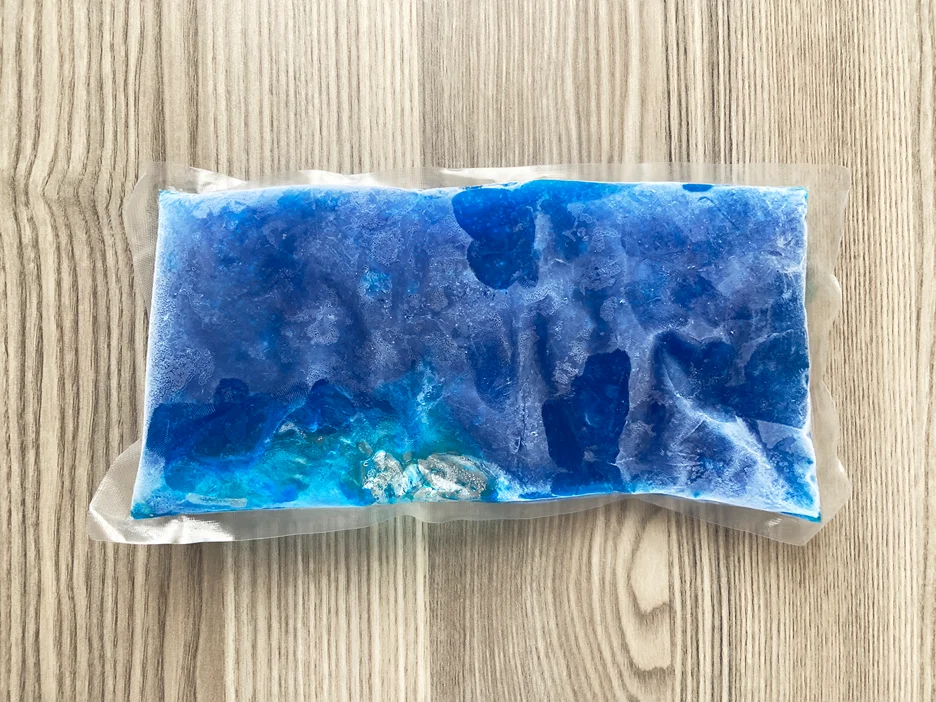Sciatica can be an extremely painful and debilitating condition, causing sharp pains that radiate from the lower back and travel down the leg. If you’re suffering from the searing, pulsating pain of sciatica, relief often feels out of reach. But before reaching for addictive prescription medications or resigning yourself to the agony, try this simple, natural home remedy – ice packs.
Applying ice packs to targeted areas can dramatically reduce sciatic nerve inflammation and irritation when done properly and consistently. In just 10 minutes a day, you may find the radiating inferno of sciatica pain cooling to more bearable levels. Here’s how to maximize the power of ice therapy to finally achieve real sciatica pain relief.
The Science Behind Cold Therapy
Cold therapy works by lowering the temperature of body tissues. It is an effective way to alleviate sciatica pain by reducing inflammation and numbing the affected area. When ice is applied to the skin surface, the cold temperatures cause the blood vessels in that area to constrict. This reduces blood flow to the tissues, lowering their metabolic rate and oxygen requirements.
With less blood circulating to the injured tissues, there is also less influx of inflammatory chemicals, helping diminish swelling and inflammation. The cold also slows nerve conduction velocity and inhibits the release of pain signals. This increases pain tolerance and provides temporary numbness. Overall, the lowered tissue temperature and neural activity induced by cold therapy interrupts the processes that contribute to sciatic pain.
Some ways to utilize cold therapy include:
| Cold packs | Placing an ice pack over the rear pelvic area may help relieve sciatica pain by slowing down the pain signals that are transmitted to the brain. Cold packs are available in the form of cold wraps or gel packs. A bag of ice or frozen vegetables may also be used. It is important not to apply ice directly to the skin to avoid skin and/or nerve damage. |
| Ice massage | Ice massage can be done by using an ice cube or a frozen water bottle to massage the affected area. This can help reduce inflammation and numb the area. |
| Cold towel | A cold towel can be made by dampening a towel with cold water, folding it, and placing it in a plastic, sealable bag. The bag should be placed in the freezer for 15 minutes, then removed and placed on the affected area. |
Benefits of Using Ice Packs for Sciatica
Ice packs are one of the most readily available and easy-to-use forms of cold therapy for sciatic nerve pain relief. The cold from ice packs can help manage sciatica symptoms in several ways:
- Provides immediate pain relief by numbing nerve endings and slowing pain signals
- Reduces muscle spasms and tension near the compressed nerve root
- Decreases inflammation and swelling around the lumbar spine and sciatic nerve
- Limits fluid leakage from injured tissues that contribute to inflammation
- Constricts nearby blood vessels, limiting blood flow to painful areas
- Slows nerve conduction, reducing the effects of compression or irritation on the sciatic nerve
- Encourages release of endorphins, the body’s natural painkillers
- Prevents secondary injury by immobilizing the area and limiting range of motion
How Ice Therapy Works
When an ice pack is applied to the skin, the underlying tissues are cooled. This decreases the metabolic activity of cells in the area, reducing their need for oxygen and nutrients. The cold also causes blood vessels to constrict, limiting blood flow. With less fresh blood coming in, inflammatory chemicals cannot easily reach the injured tissues, helping control swelling.
The lower temperature limits the conduction of pain signals through nerve endings and along nerve fibers. This provides short-term numbness and pain relief. Cold therapy also discourages muscle spasms which may be contributing to sciatic nerve compression. The cold causes the muscles to relax and loosen up.
As tissues grow cold, their swelling and chemical activities slow down. This gives injured structures a chance to recover with less inflammation present. The numbness and reduced circulation limits strain on the tissues as well. All of these physiological changes induced by ice lead to temporary relief of sciatic nerve irritation.
Practical Tips for Using Ice Therapy

To gain the advantages of ice therapy for sciatica, follow these tips:
- Use frozen gel packs, bagged ice cubes, or frozen water bottles. Gel packs mold to the body best.
- Place a towel between the skin and the ice pack to protect the skin from damage.
- Try an ice massage by rubbing ice over the painful area in a circular motion.
- Focus on icing areas where the sciatic nerve passes through – lower back, buttocks, back of thighs.
- Apply ice for 10-15 minutes at a time, 2-3 times per day. Allow skin to return to normal temperature between applications.
- Alternate short bursts of cold therapy with short applications of gentle heat to improve circulation.
- Try wrapping an ice pack around the thigh or calf to numb the leg portion of the sciatic nerve.
- Use ice packs after physical activities that aggravate sciatica to control inflammation.
- Combine ice therapy with pain medications, stretches, and proper lumbar support to address sciatica from multiple angles.
Precautions and Safety Measures
While ice packs can alleviate sciatica symptoms, they can cause complications if used incorrectly. To maximize benefits and minimize risks, keep these precautions in mind:
- Avoid direct contact between ice and skin for more than a few minutes to prevent frostbite.
- Never apply ice directly to the spine or over superficial nerves.
- Wrap ice packs in a towel or cloth to protect the skin and provide insulation.
- Monitor the skin for excessive redness, blistering or blanching and discontinue use if these occur.
- Avoid using ice packs over areas of skin that lack normal sensation.
- Limit treatment sessions to less than 20 minutes at a time, allowing the skin to warm fully between applications.
- Elderly individuals and those with circulatory issues may be more prone to skin injury from ice packs. Extra precautions should be taken with these groups.
- Consult a doctor if you have any concerns about the proper application of ice for sciatica pain.
Other Pain Relief Solutions for Sciatica
While ice packs can temporarily numb pain signals and reduce inflammation, other therapies are often needed for more complete sciatica pain management. Some other options include:
| Solutions | Description |
| Heat Therapy | Heating pads, hot packs, steamed towels, and hot water bottles applied to tense muscles can improve circulation and relax muscle spasms. Use heat before exercise or massage. Avoid direct application to irritated nerve roots. |
| Physical Therapy | Specific exercises can gently stretch tissues around the sciatic nerve, strengthening weak areas in the back, hips and legs to reduce compression on the nerve. |
| Medications | Over-the-counter or prescription NSAIDs reduce inflammation. Muscle relaxants loosen tense tissues. Topical medications may numb localized pain. |
| Moist Methods | Soaking in Epsom salt baths can reduce muscle soreness and temporarily alleviate pain. Helpful for acute flare ups. |
For optimal sciatica treatment, be sure to consult a doctor or physical therapist. They can recommend the best options and exercises based on your individual condition.
Takeaway

Sciatica can cause debilitating pain that severely impacts quality of life. While multiple strategies are needed to address the root causes, using ice packs is one simple yet effective way to temporarily relieve pain and reduce inflammation. Applying ice multiple times a day cools irritated nerves, limits muscle spasms, and blocks pain signaling to provide fast relief when sciatica flares up.
In combination with other therapies, ice packs can help manage sciatica as part of a comprehensive pain management plan. Be sure to consult a medical professional for personalized advice on treating sciatica safely and effectively. Visit Kaly today to find the best specialist for your needs.
